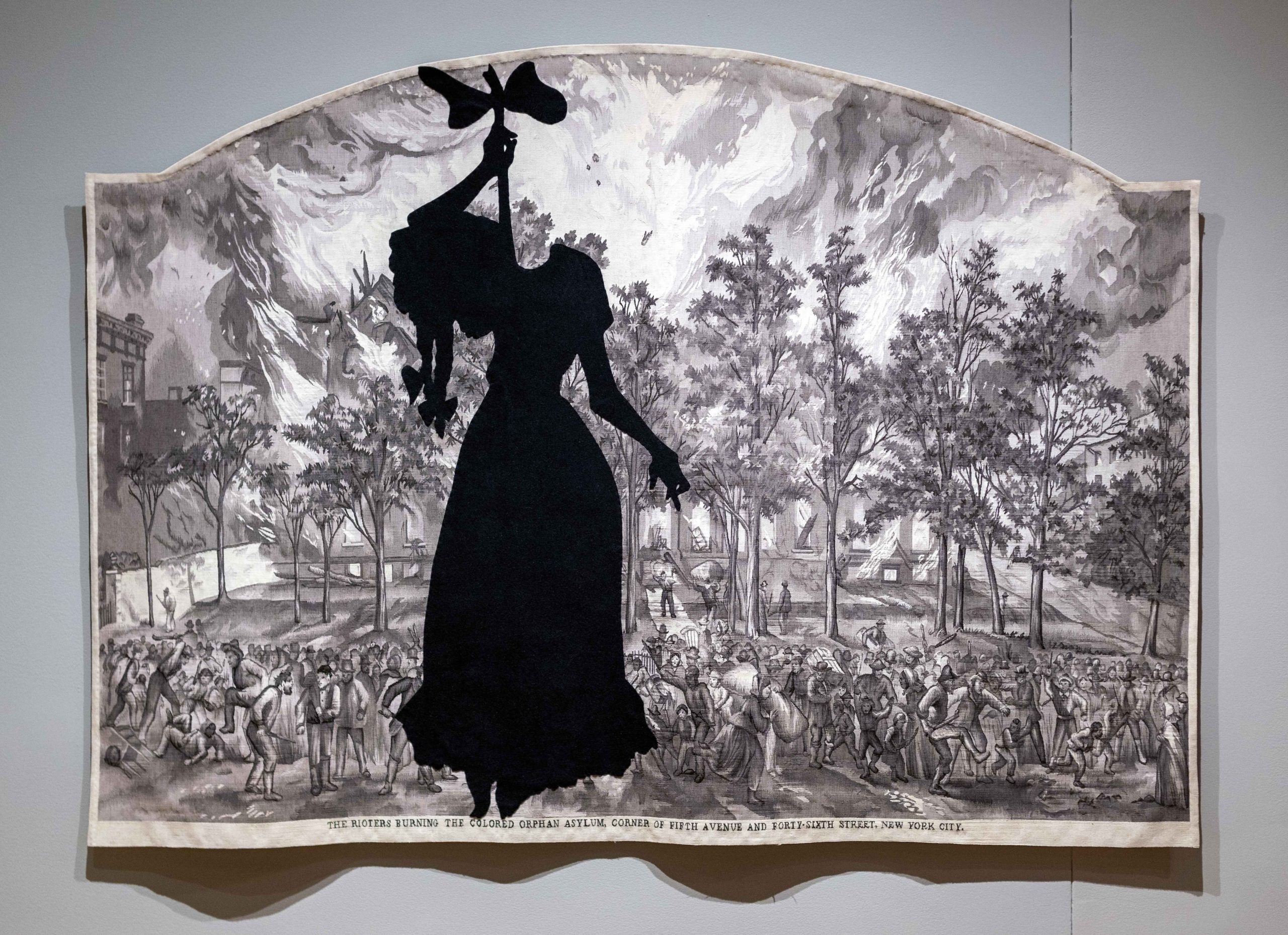
Kara Walker, A Warm Summer Evening in 1863, 2008, wool tapestry and felt, 175.3 x 248.9 cm (Crystal Bridges Museum of American Art; photo: Steven Zucker, CC BY-NC-SA 2.0) © Kara Walker
A large, striking tapestry in shades of black, white, and gray with an unusual subject matter: a scene of a burning building, a murderous mob, and in front of it all, the silhouette of a hanged young woman. The gentleness evoked by contemporary artist Kara Walker’s softly draped hand-woven wool tapestry, plush felt, and the title, A Warm Summer Evening in 1863, is violently at odds with the image it portrays: the burning of an asylum for Black orphans in New York City in the midst of the U.S. Civil War (1861–65). How can we begin to understand this image and the stories it tells?
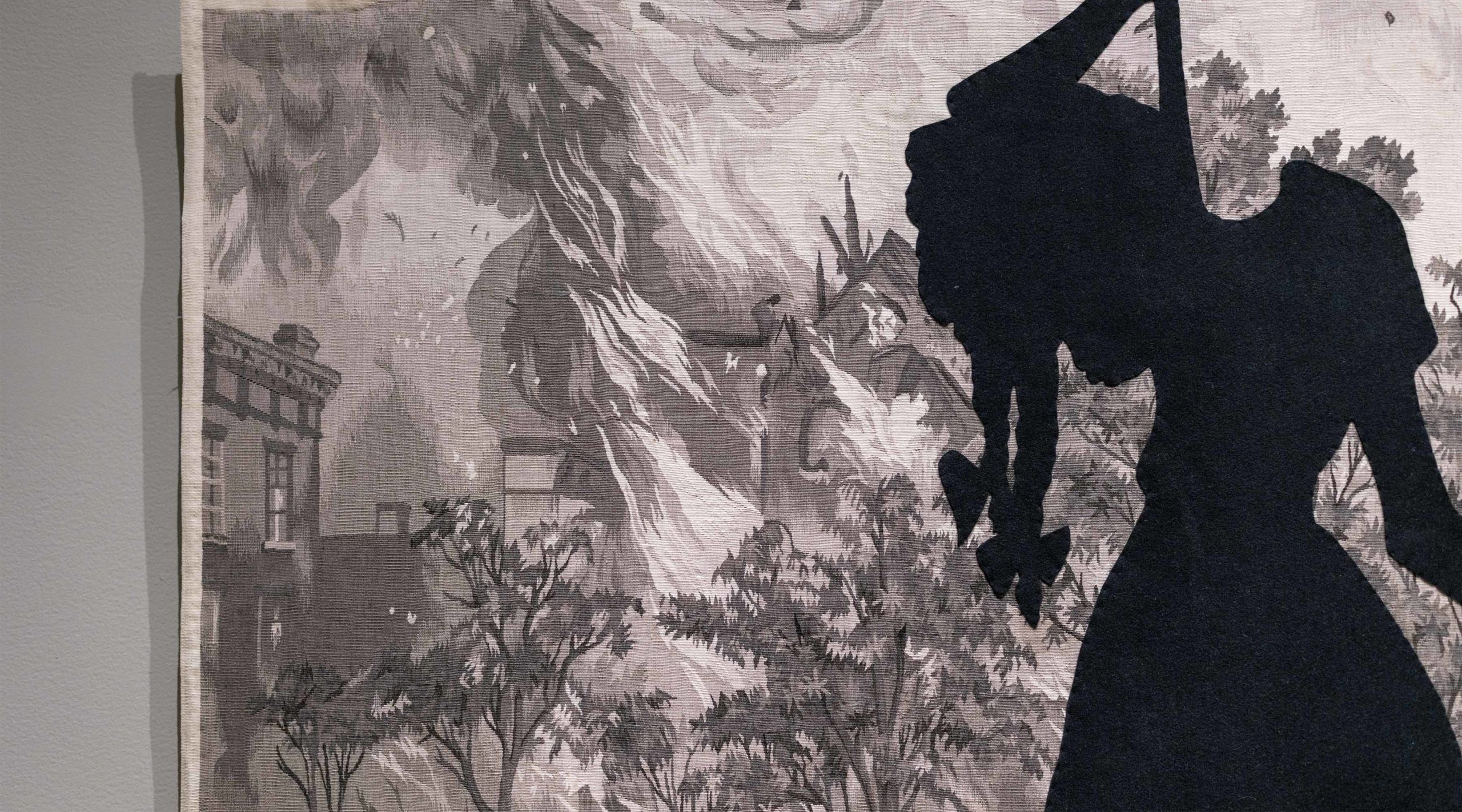
Kara Walker, A Warm Summer Evening in 1863 (detail with flames), 2008, wool tapestry and felt, 175.3 x 248.9 cm (Crystal Bridges Museum of American Art; photo: Steven Zucker, CC BY-NC-SA 2.0) © Kara Walker
With this tapestry, Walker invites us to confront a legacy of the Civil War that—despite the myriad ways it has shaped the United States into the 21st century—has never been fully acknowledged. To interpret this image, we must turn to histories that predate the Civil War and expose its causes; the experiences of those who lived through the war; and finally, to the legacy of the war—how it has been both remembered and forgotten.
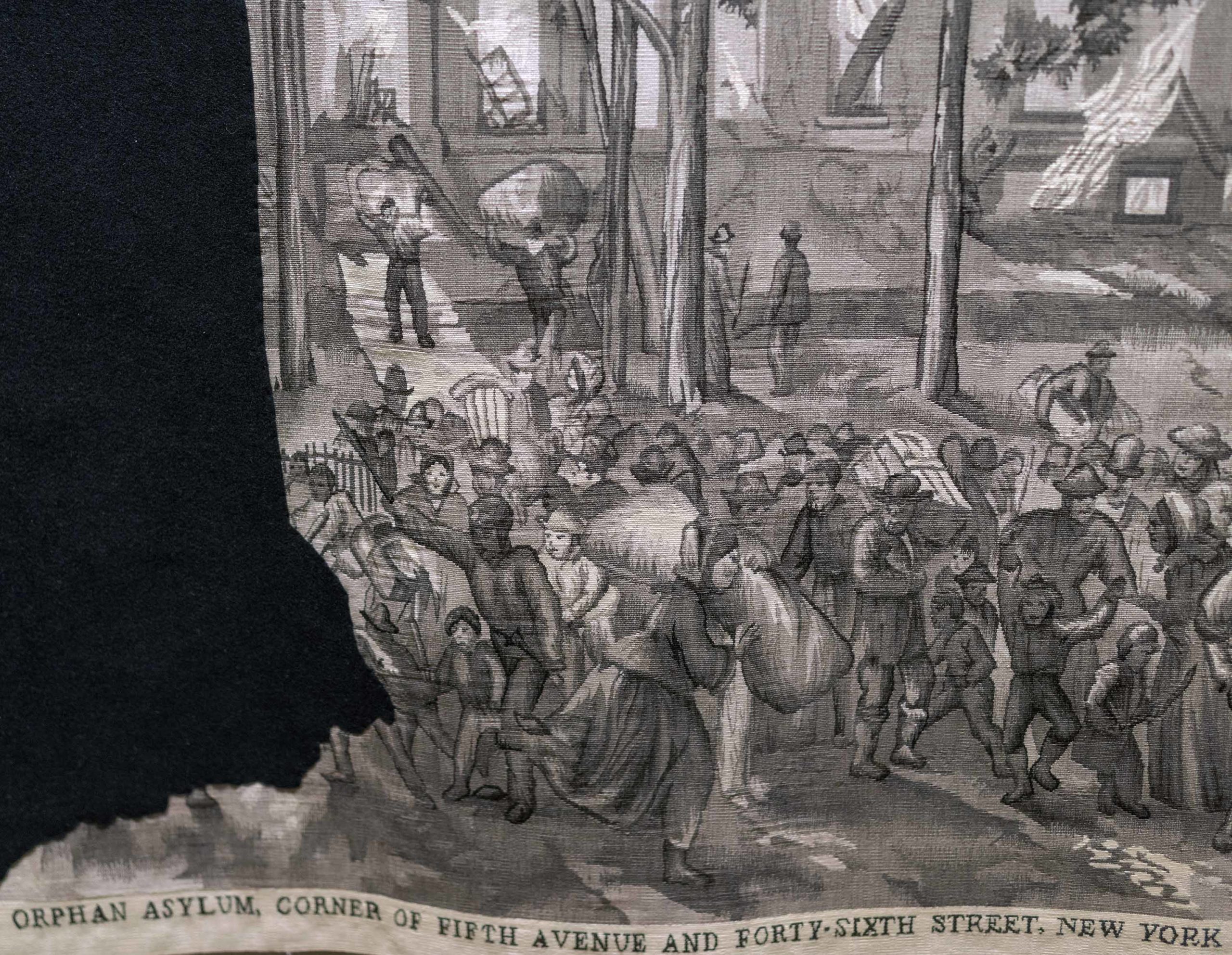
Kara Walker, A Warm Summer Evening in 1863 (detail with looters), 2008, wool tapestry and felt, 175.3 x 248.9 cm (Crystal Bridges Museum of American Art; photo: Steven Zucker, CC BY-NC-SA 2.0) © Kara Walker
This work of art recounts the terror of the New York City Draft Riots and the burning of the Colored Orphan Asylum in July 1863—a murderous four-day rampage fueled by bigotry and inequity. To interpret this powerful image, the histories reviewed must include more than the written word and explore visual culture: the paintings, sculptures, photographs, prints, and visual ephemera of the United States in the years before, during, and since the war.
It’s important to ask why the Civil War (and its visual legacy) have become such an important touchpoint today and why so many contemporary artists have drawn from its history.
Because this legacy is so important, historians and art historians have worked together to develop this project, The Civil War in Art, offering both historical and art-historical pathways to understanding not only the stories unfolding in Kara Walker’s art, but also the powerful and contested symbolism found in public monuments and so many other images today—a century and a half after the end of the war.
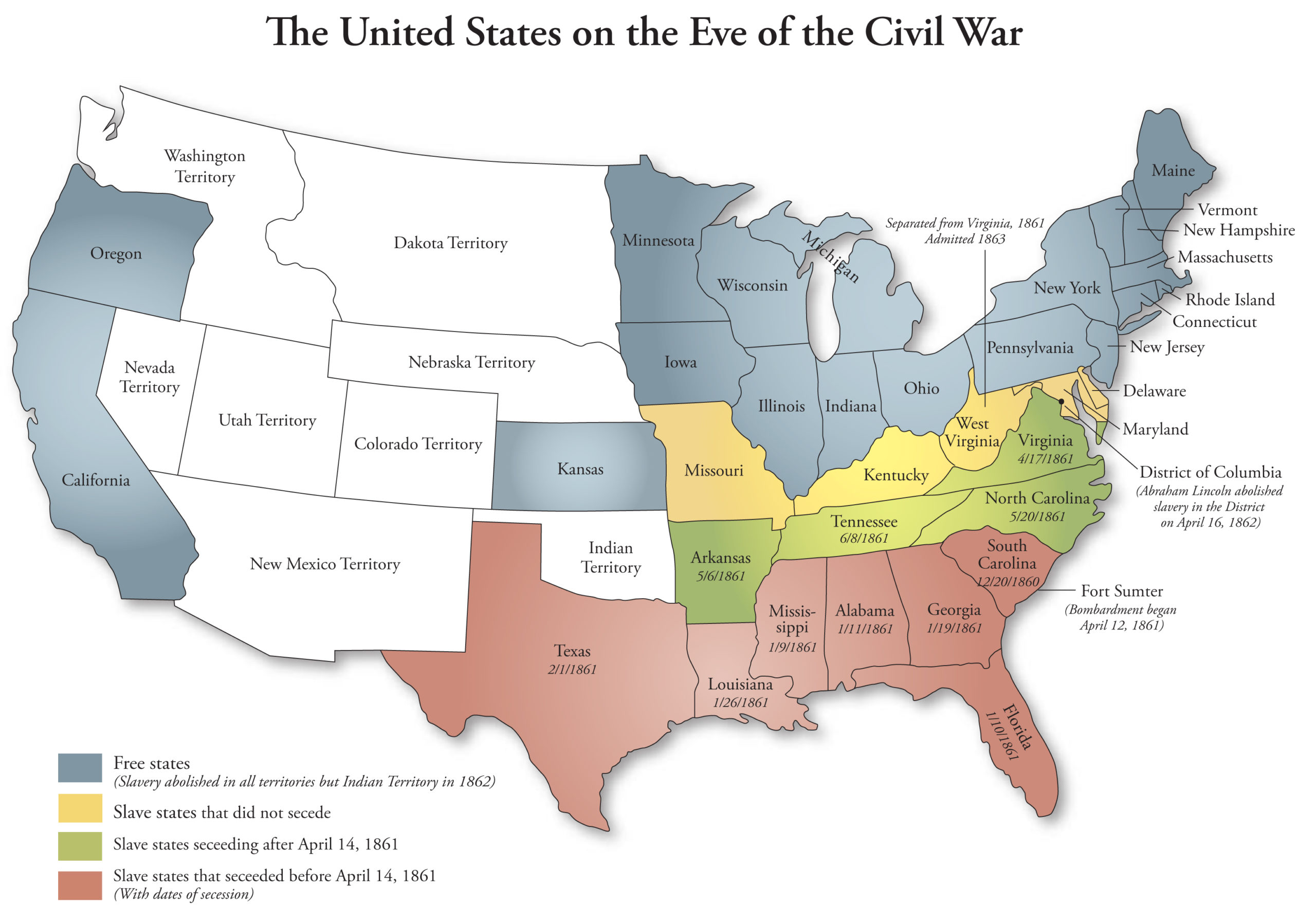
Map of the United States on the Eve of the Civil War in 1861. The lands represented were home to many Native peoples and nations not represented by the state and territorial boundaries seen here.
The U.S. Civil War
In 1861, after years of internal political strife concerning the institution of slavery and its expansion into new territories, the United States erupted in civil war. Eleven states in the U.S. South rebelled against the government and attempted to form a separate nation where slavery would be constitutionally protected, called the Confederate States of America. The U.S. government (sometimes called “the North” since the states of “the South” had rebelled, but it included all of the states in the country that had not seceded as well as the western territories controlled by the United States) sought to put down this rebellion.
Over the next four years, the United States and the Confederate rebels fought a bloody war, which remains the deadliest war in U.S. history to date. The war also had important social consequences: by 1865, when U.S. forces defeated the rebels, emancipating enslaved Black people had become an important war aim of the U.S. government, and in the years immediately following the war constitutional amendments guaranteed citizenship rights to Black people. The end of slavery and the expansion of the U.S. federal government undertaken to wage war on such a large scale transformed the society, politics, and economy of the United States, paving the way for its emergence as a major industrial and imperial power in the American West and Pacific.
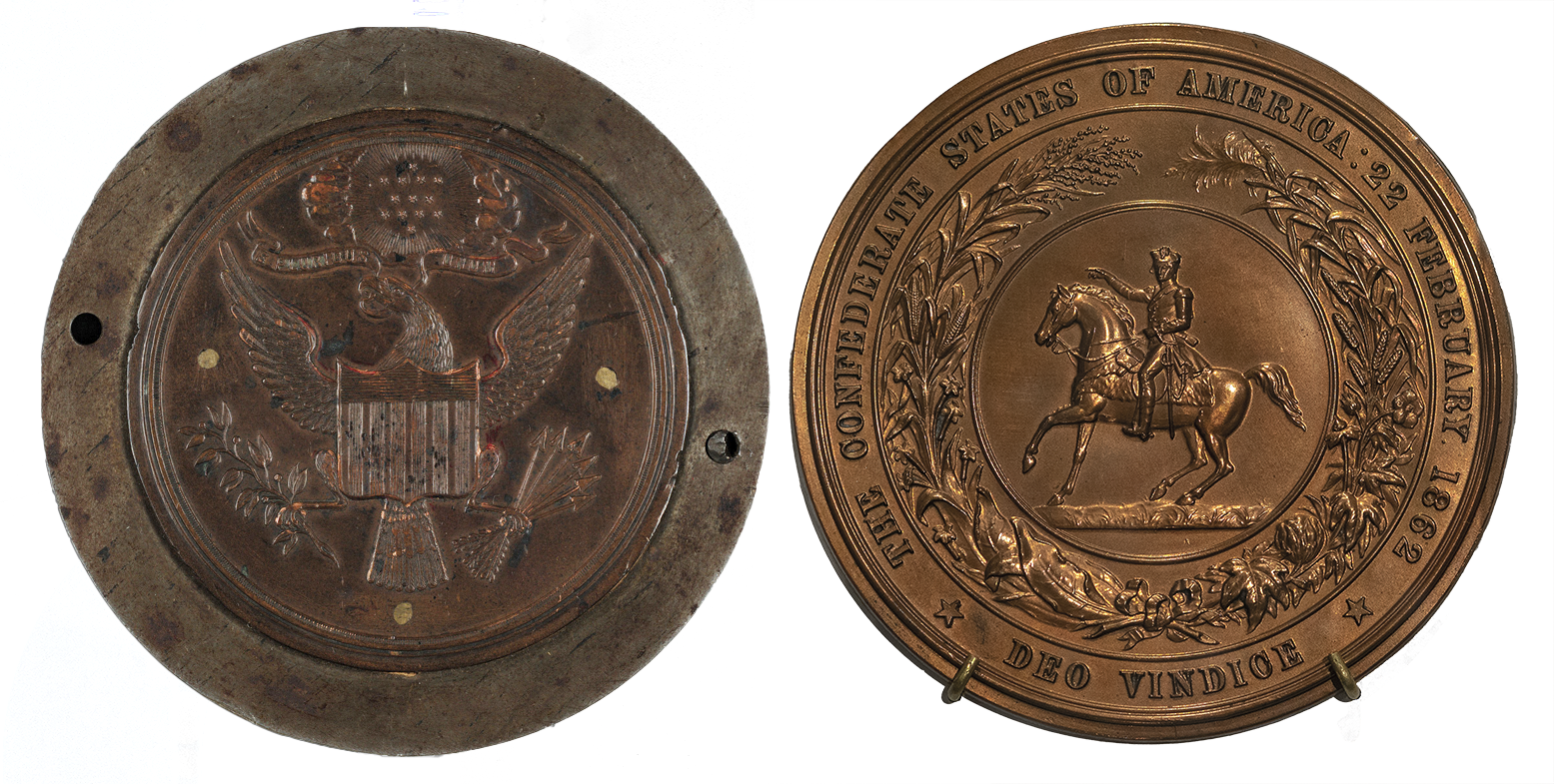
Left: Great Seal of the United States (counterdie made from the 1841 seal in 1866); right: Great Seal of the Confederate States of America, 1864, bronze (photo: Steven Zucker, CC BY-NC-SA 2.0)
By the numbers, the impact of the Civil War is staggering in scale: between 1861 and 1865, 4 million enslaved people won their freedom, 3 million soldiers went to war, and approximately 750,000 people died—more than 2% of the total population of the United States. [1] It was virtually impossible to have lived through this era without having been touched by the war in some way.
The war’s place in U.S. history is so central that most U.S. history survey classes use the Civil War as its dividing line: U.S. history before the Civil War and U.S. history after the Civil War. As a result, the war itself can sometimes seem like an afterthought, with the victory of U.S. forces assured and the end of slavery a foregone conclusion. But for the people who lived through the war, day by day, nothing was certain. In the 2020s, living through a pandemic without knowing what will come next or when it will truly be over, we are perhaps better able to understand what it felt like to be in the midst of such an historic event taking place over a span of several years: the anxieties, the possibilities, the losses, and the surprises that someday may appear as a single chapter in a U.S. history textbook.
The U.S. Civil War in Art is a collection of essays and videos that strives to recapture the immediacy of the war, engaging with the paintings, popular prints, photography, and material culture that reflect the experiences of those who lived through the war. We also explore how visual culture influenced public opinion. This project looks beyond the war years of 1861–65, since the war’s causes stretch back to the earliest European settlements in the Americas, and its consequences continue to resound to the present day. For this reason, the essays address not only art representing the war itself but the visual culture that has shaped our understanding of the war ever since.
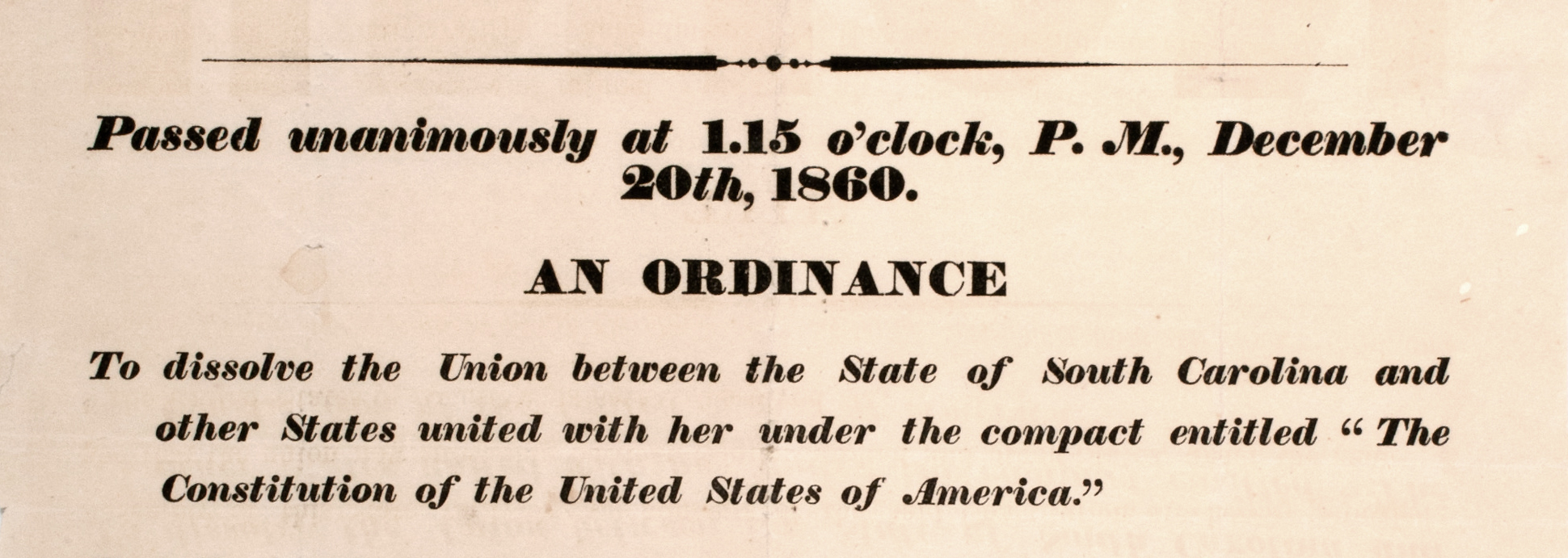
Charleston Mercury Extra Broadside (detail), Charleston Mercury Office, 1860, 54 x 29 cm (American Antiquarian Society)
A note on language
The terms used to discuss the people and actions of the past affect how we understand this history. For many years, language around slavery and the Civil War was romanticized, obscuring the brutality of slavery and ennobling those who fought to preserve it. In this series of essays and videos, we employ terminology that both better represents the experiences of the people we describe and reflects current academic usage. For example, we do not use “slave” but rather “enslaved person,” to emphasize that enslavement was not a person’s natural condition—it was a role that some people actively forced onto others. We also use “enslaver” rather than “master.” In referring to military entities, we refer to the forces of the United States as the “U.S. Army” rather than the “Union Army,” a term which some scholars argue supports the Confederate view that the United States had collapsed. [2] We have provided hover definitions for terms throughout the essays to support readers.
A note of thanks
We wish to thank the Terra Foundation for American Art for giving Smarthistory the opportunity to develop this suite of resources as well as the many curators, educators, historians, and art historians who have generously contributed their expertise, and especially our esteemed board of advisors:
- Renée Ater, Ph.D., Provost Visiting Associate Professor, Africana Studies, Brown University
- Sarah Beetham, Ph.D., Chair of Liberal Arts and Assistant Professor of Art History, Pennsylvania Academy of the Fine Arts
- Kirsten Pai Buick, Ph.D., professor of Art History, Associate Dean of Equity and Excellence, Special Assistant to the Dean of Arts & Sciences, and Director of Africana Studies, University of New Mexico
- Adam H. Domby, Ph.D., Associate Professor of History, Auburn University
- Alejandro de la Fuente, Ph.D., Professor of Latin American History and Economics, Professor of African and African American Studies and of History, Director, Afro-Latin American Research Institute, Hutchins Center for African and African American Research at Harvard University
- Aston Gonzales, Ph.D., Associate Professor of History, Salisbury University
- Hilary Green, Ph.D., Associate Professor of History in the Department of Gender and Race Studies and serves as the co-program director of the African American Studies program with an additional partial appointment in American Studies, University of Alabama
- Tyler Green, historian, critic, author, as well as producer and host of The Modern Art Notes Podcast
- Megan Kate Nelson, Ph.D., writer, historian, and cultural critic
- Holly Pinheiro, Ph.D., Jr. Assistant Professor, History, Furman University
- Mark Pohlad, Ph.D., Associate Professor, History of Art and Architecture, DePaul University
- Margaret Storey, Ph.D., Professor and Associate Dean, College of Liberal Arts & Social Sciences, DePaul University

